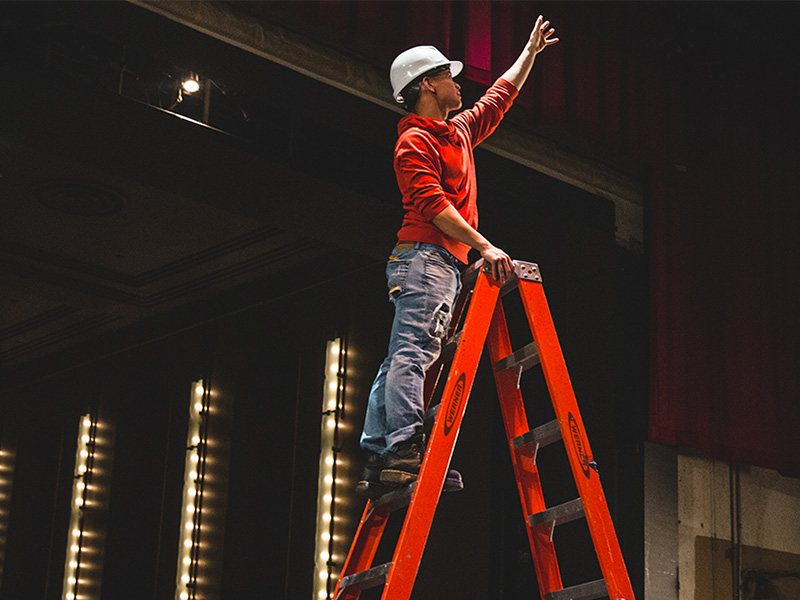- Ladders must be visually inspected prior to their use. The user is responsible for the inspection. Ensure that safety feet are in place and that there are no rungs lost or loose, and no damages that could cause personal injury. Use a ladder that has safety feet.
- Choose the right length ladder. It should be long enough so that you can work standing not above the 4th rung from the top. You should not stand on a ladder with your knees extending above the top rung and never use the top rung. Do not overreach from a ladder. If your buckle reaches past the uprights, you’ve gone too far. Move the ladder.
- Defective ladders must be immediately removed from service and promptly tagged not to use.
- Stepladders are positioned on a firm and level surface when used.
- Straight and extension ladders are held by a second person during the initial ascend until the top of the ladder is firmly secured for subsequent climbs. Make sure nobody bumps into it.
- Keep both hands free of tools and other items as you need both hands to climb. Wear a tool belt or pull materials to you after reach the top. Face the ladder while ascending or descending.
- Ladders are placed to allow a minimum 1:4 ratio between horizontal and vertical. It should be placed one rung length out from the wall for every 4 rungs where the ladder touches the wall.
- Make sure that the ladder is supported on a firm and strong structure, and not on any pipes or conduits. The uprights of a ladder should be vertical. Shore up if the ground is uneven.
In an incident, a worker placed a ladder leaning against a conduit. While climbing up, the conduit broke. He lost balance and fell down and got injured. Subsequently, a chain of events occurred. The wires inside the conduit were damaged, causing a short circuit. UPS power to the unit was lost. Unit tripped causing production loss and process upsets.
“ Y our ladder is one of your most important tools. Use it safely and wisely"

Post a Comment